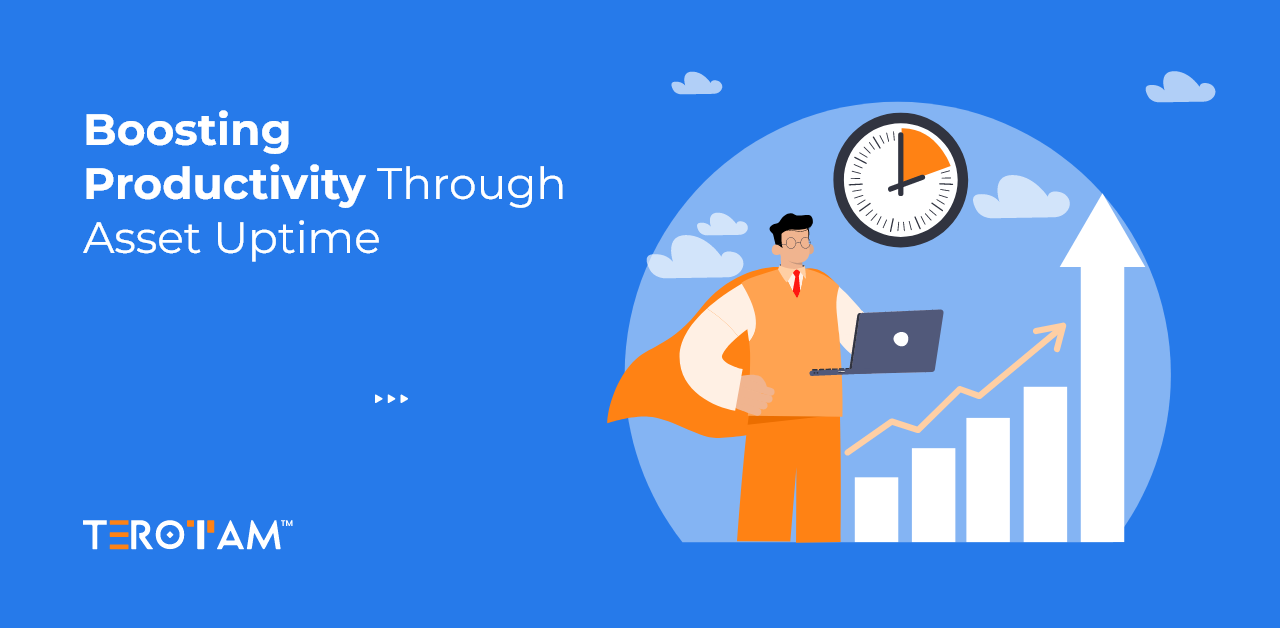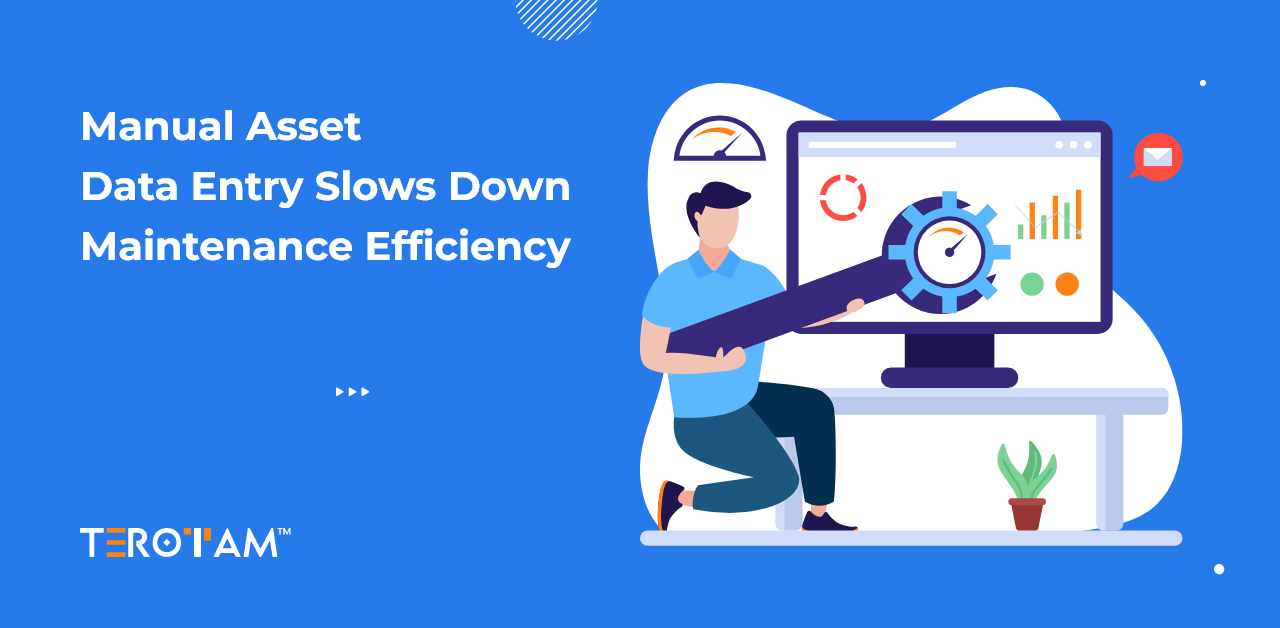Did this thought ever jump in your mind that how your favorite snacks and drinks consistently hit the spot? It’s not just about the recipe; it’s about the behind-the-scenes how their operations run smoothly.
A constantly operating production floor, whether a manufacturing or a retail outlet, where every machine hums and churns, ensuring that each of the products are made or served to perfection.
But here’s the tricky part: keeping such devices in excellent condition is no easy task. That’s where Asset Condition Monitoring comes in, ensuring that every piece of equipment is performing to its full potential.
In this article, we’re diving deep into the world of Asset Condition Monitoring in the Food and Beverages industry. From production lines to retail shelves, we’ll explore how this vital process keeps everything running smoothly. So be with us in this 10 minute read article that uncovers the secrets behind the power of asset condition monitoring.
What is Asset Condition Monitoring?
Asset Condition Monitoring is a proactive approach to maintenance management that involves continuously monitoring the health and performance of critical equipment and assets in real-time. It employs a variety of sensors, data collection methods, and predictive analytics to assess the condition of machinery and detect any signs of impending failure or deterioration.
Asset Condition Monitoring attempts to reduce unplanned downtime, optimize maintenance schedules, and extend asset lifespan by spotting possible concerns before they become costly failures. This is accomplished through the continuous collection and analysis of numerous characteristics like temperature, vibration, pressure, and fluid levels.
One key component of Asset Condition Monitoring is predictive maintenance, which uses historical data and machine learning algorithms to predict when equipment is likely to fail. By analyzing trends and patterns in equipment performance, maintenance activities can be scheduled proactively during planned downtime, minimizing disruption to operations.
Common techniques used in Asset Condition Monitoring
- Vibration Analysis: Monitoring the vibration signatures of rotating machinery to detect abnormalities such as imbalance, misalignment, or bearing faults.
- Thermography: Using infrared cameras to identify overheating components, electrical faults, or insulation defects in equipment.
- Oil Analysis: Analyzing the chemical composition and physical properties of lubricating oils to detect signs of contamination, wear, or degradation.
- Ultrasonic Testing: Detecting leaks, mechanical defects, or electrical arcing in equipment by analyzing ultrasonic sound waves.
- Performance Monitoring: Tracking key performance indicators (KPIs) such as energy consumption, throughput, and efficiency to assess the overall health and performance of assets.
How Asset Condition Monitoring Works?
Asset Condition Monitoring in the Food and Beverages (F&B) industry utilizes a sophisticated framework to ensure optimal equipment health and performance.
Here’s a streamlined overview of how asset condition monitoring operates:
- Sensor Deployment: Sensors are strategically placed on critical equipment to monitor parameters such as temperature, pressure, vibration, and flow rates.
- Data Acquisition: Real-time sensor data is collected and stored in centralized databases or cloud-based platforms.
- Signal Processing: Raw sensor data undergoes signal processing to filter noise and extract meaningful information related to equipment health.
- Condition Monitoring Algorithms: Advanced analytics algorithms analyze processed data to detect anomalies or deviations from normal operating conditions.
- Predictive Analytics: Historical data and machine learning algorithms are used to forecast equipment behavior and anticipate maintenance requirements.
- Alert Generation: Alerts are generated in real-time when potential issues are detected, providing actionable insights for maintenance personnel.
- Integration with Computerized Maintenance Management Systems (CMMS): Asset Condition Monitoring systems are often integrated with CMMS to streamline maintenance workflows and prioritize tasks based on real-time asset health information.
- Continuous Monitoring and Optimization: Asset Condition Monitoring operates as a continuous monitoring solution, continually refining maintenance strategies based on real-world operational data to maximize efficiency and effectiveness.
Practical Use Case of Asset Condition Monitoring in Food & Beverages Industry
Asset Condition Monitoring helps catch problems early, so they can be fixed before they cause big trouble. It’s like having a warning system that keeps everything running smoothly and keeps customers satisfied.
Let’s take a look at two simple scenarios showing how Asset Condition Monitoring helps in the Food and Beverages industry:
Manufacturing Facility: Beverage Production Line
Let’s understand that a busy factory making refreshing drinks for the summer. They use big machines to mix and bottle the drinks. One day, a machine starts shaking more than usual. This sets off a warning from the Asset Condition Monitoring system. Maintenance workers check and find a part in the machine is wearing out. If left alone, it could break, causing a big shutdown and ruining lots of drinks.
Luckily, because of the warning, they fixed the problem before it got worse. They replaced the worn-out part during a planned break, keeping everything running smoothly. This way, they avoided a big problem, kept making drinks, and kept their customers happy.
Retail Outlet: Refrigeration System
Now, imagine a neighborhood store with fridges keeping food or beverages cool. One day, the Asset Condition Monitoring system notices one of the fridges is getting warmer than it should be. This sends an alert to the store manager, who checks and finds the fridge’s cooling system isn’t working well.
If they ignore it, the fridge could stop working completely, spoiling all the food inside. So, they call in maintenance right away. They fix the problem before it’s too late, keeping the food fresh and the customers happy.
Benefits of Asset Condition Monitoring in Food & Beverages Industry
Asset Condition Monitoring is indispensable for F&B manufacturers striving to maintain operational excellence, ensure product quality and safety, and achieve sustainable growth. Organizations can gain a competitive edge by leveraging real-time data analytics and predictive maintenance while meeting consumer demands and regulatory standards.
Here are the major points that line outs the importance of asset condition monitoring:
Enhanced Product Quality:
It provides continuous monitoring of critical equipment parameters, ensuring optimal process conditions, safeguarding product quality and consistency.
Compliance Assurance:
Real-time monitoring of equipment performance facilitates compliance with stringent regulatory requirements, averting potential violations.
Minimized Downtime:
Predictive analytics anticipate equipment failures, allowing for proactive maintenance scheduling during planned downtime and minimizing operational disruptions.
Optimized Resource Utilization:
Using Asset Condition Monitoring, the organization identifies opportunities for process improvement, minimizing energy consumption, and optimizing production schedules based on real-time asset performance data.
Cost Savings:
Proactive maintenance strategies reduce unscheduled maintenance frequency and repair costs and extend critical asset lifespans, enhancing cost efficiency.
Risk Mitigation:
Early warning indicators enable timely interventions to mitigate operational risks, safeguarding business continuity.
Continuous Improvement:
Asset condition monitoring fosters a data-driven approach to decision-making, enabling organizations to identify optimization opportunities and drive ongoing performance enhancement initiatives.
How does CMMS Software support asset Condition Monitoring?
The Food and Beverage industry relies heavily on computerized Maintenance Management System software to support Asset Condition Monitoring activities. TeroTAM’s CMMS software improves the efficiency of condition monitoring programs and streamlines maintenance operations by easily connecting with Asset Condition Monitoring systems. It allows maintenance teams to schedule and prioritize work based on real-time asset health data, ensuring that potential issues are addressed before they worsen.
In addition, TeroTAM offers complete reporting and analytics capabilities, enabling firms to monitor equipment performance trends, identify areas for improvement, and optimize maintenance programs for optimal efficiency and effectiveness.
Conclusion
Asset Condition Monitoring emerges as a critical tool for ensuring operational efficiency, maintaining product quality, and minimizing downtime. To harness the full potential of Asset Condition Monitoring and elevate your Food and Beverage operations to new heights, consider implementing a robust Computerized Maintenance Management System (CMMS) software solution. With seamless integration and comprehensive functionality, CMMS software empowers maintenance teams to streamline workflows, prioritize tasks, and drive continuous improvement.
Ready to take your maintenance management to the next level? Contact us now or write to us at contact@terotam.com to learn more about how our CMMS software can revolutionize your approach to Asset Condition Monitoring and drive lasting success in the Food and Beverages industry.








